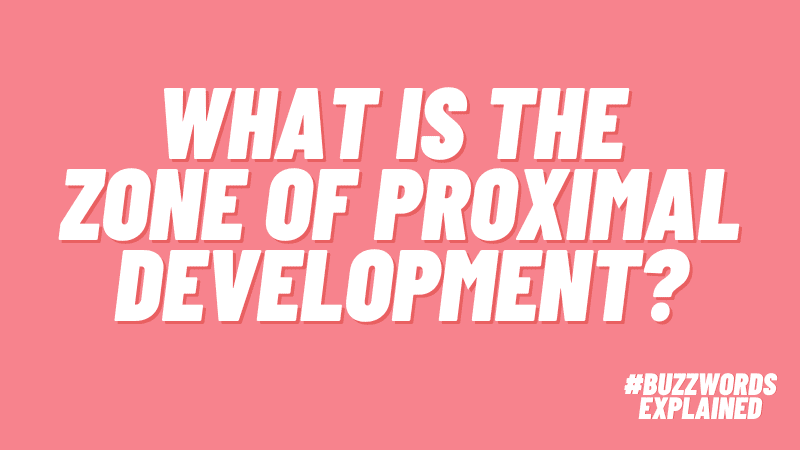Undoubtedly you have heard of the concept Zone of Proximal Development, particularly if you’re fresh out of teacher training. But perhaps you’re wondering, what exactly does it mean in the context of the everyday classroom? How can my students benefit from instruction based on ZPD? And where do I begin to learn how to weave it into my instruction? Check out this basic overview, plus resources, to get you started.
What is the Zone of Proximal Development?
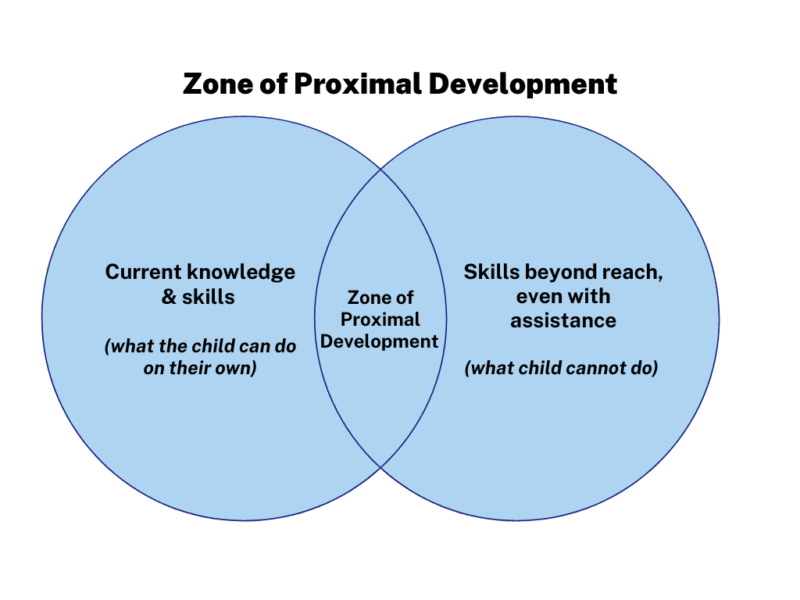
Source: EPIC
The Zone of Proximal Development (ZPD) was a key construct in Russian psychologist Lev Vygotsky’s Theory of Learning and Development, developed in the early 1930s. Vygotsky’s work was rooted in Social Constructivism—the idea that individuals construct knowledge and understanding from their experiences. He maintained that learning occurs through purposeful and meaningful social interactions with others.
Learn more about Vygotsky’s theory of learning and development here.
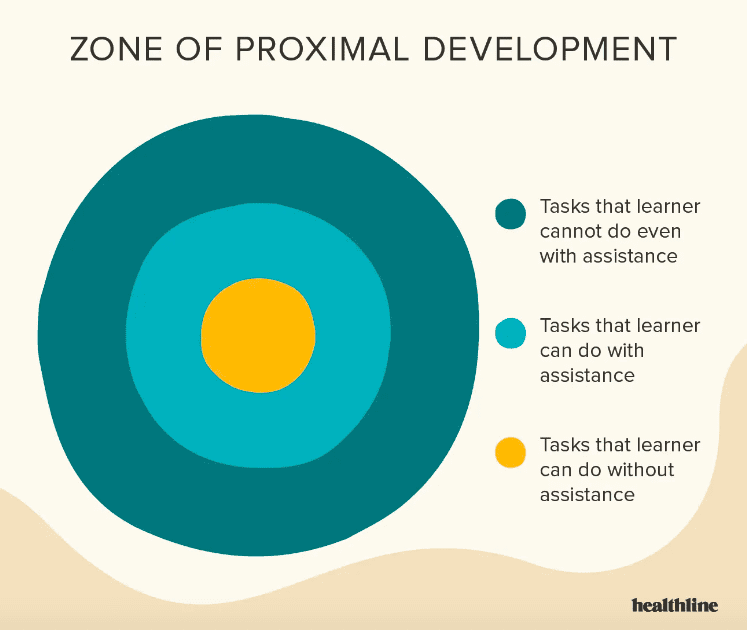
Source: Healthline
Simply put, the Zone of Proximal Development is defined as the gap between what a learner has mastered and what they can potentially master with the support and assistance of a “more knowledgable other”—a teacher, mentor, or peer.
The term “proximal” refers to skills that a student is “close” to mastering. So teaching in the ZPD requires guiding students through a task that is slightly above their ability level.
As a student progresses through the Zone of Proximal Development toward the goal, the teacher gradually releases control to the student as they approach their level of potential learning.
Learn more about the gradual release model of instruction.
How do you identify a student’s ZPD?
Before you begin, it is critical to evaluate students’ current levels of knowledge using both direct and indirect classroom assessment. Formative assessment occurs in the everyday classroom during the learning process. Summative assessment occurs at the end of the learning process and provides a final evaluation of skill mastery.
According to veteran teacher Brooke Mabry, the key is determining students’ “sweet spot.” “When we set a learning task too far past readiness or do not provide appropriate scaffolding,” she says, “learners are likely to enter the panic zone, aka, frustration, and shut down. When we set the learning task too far below readiness, on the other hand, learners can enter the apathy zone, aka, boredom.”
Learn more about the “Power of Just Right” here.
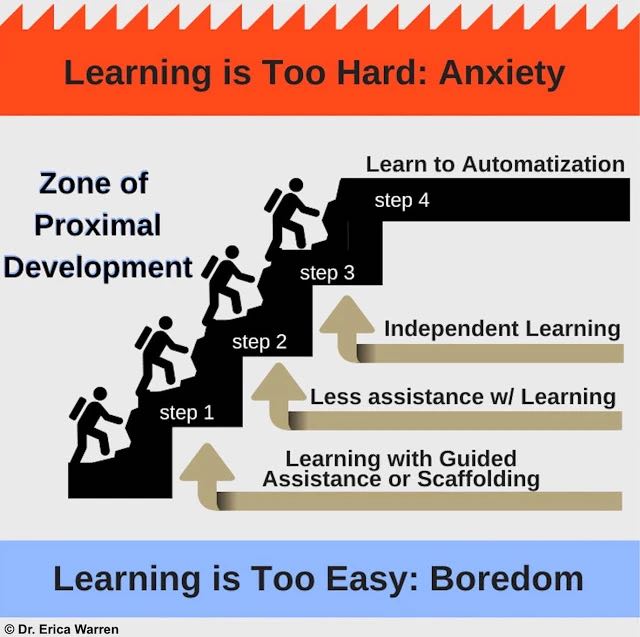
Source: Structural Learning
What is the best instructional strategy to access ZPD?
Scaffolding—a concept introduced by Jerome Bruner as an expansion of Vygotsky’s ideas—is typically viewed as the most effective strategy. Scaffolding is defined as temporary supports that teachers provide to help students access complex content and acquire skills that will enable them to complete tasks independently. The process is fluid—as students develop new skills and knowledge, the tasks that fall within their ZPD will change. From modeling and demonstrating to incorporating visual aids and breaking tasks into smaller steps, there are many strategies that fall under the umbrella of scaffolding.
Learn more about effective ways to scaffold learning in the classroom here.
What are the benefits?
Working within a student’s Zone of Proximal Development is beneficial for students in many ways, including:
- Providing students with personalized instruction.
- Motivating students to engage in higher-level thinking.
- Challenging students to higher levels of achievement.
- Engaging students in meaningful one-on-one dialogue.
- Increasing the likelihood for students to meet instructional objectives.
- Facilitating opportunities for peer-teaching and learning.
- Creating teaching methods that can be applied to other learning situations.
What are the challenges?
There are also challenges in implementing instruction based on ZPD, including:
- Teachers need to be properly trained to achieve optimal results.
- Planning for and implementing scaffolds is time-consuming and demanding for teachers.
- A school may not have enough instructors to accommodate each student.
- Selecting scaffolds that match diverse learning and communication styles is difficult.
- Judging when the student no longer needs the scaffold is essential.
- Not understanding the students well enough can be a roadblock to providing appropriate scaffolds.
Does instruction informed by the Zone of Proximal Development work?
Many studies conducted over the last few decades evaluated the effectiveness of using ZPD instructional methods. Overall, the research confirms that these methods help students learn more than traditional teaching methods. For example, a 1990 study found that children who received guidance on a new task were significantly more successful than those who completed a task on their own. In addition, a study conducted in 2014 found that language students who had tutors that used scaffolding techniques based on ZPD made significantly more progress in their writing quality and strategy application.
However, in order to be effective, certain conditions must be met. Most importantly, teachers must accurately identify the student’s ZPD. In addition, chosen scaffolding methods work best when they are tailored to the needs of each learner. Lastly, using a variety of strategies and degrees of assistance produces the best results.
Learn more about the effectiveness of using ZPD and scaffolding as teaching methods here.
Still have questions about ZPD? Drop by the WeAreTeachers HELPLINE group on Facebook for advice.
For more, check out What Is Scaffolding in Education?
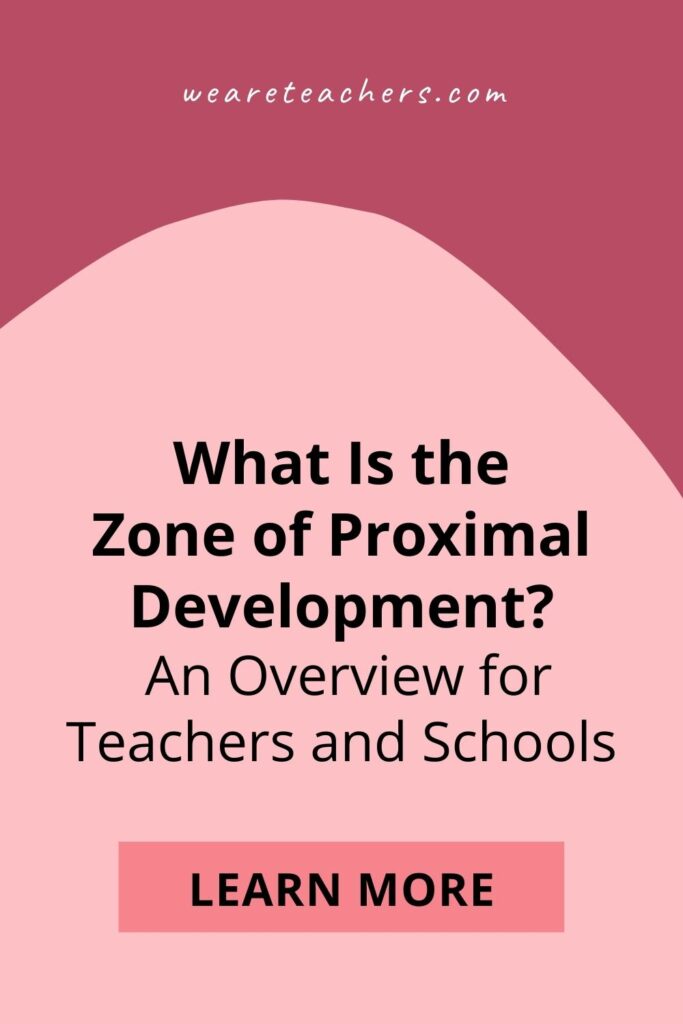
\n
\n
The term “proximal” refers to skills that a student is “close” to mastering. So teaching in the ZPD requires guiding students through a task that is slightly above their ability level.
\n
As a student progresses through the Zone of Proximal Development toward the goal, the teacher gradually releases control to the student as they approach their level of potential learning.
\n
\n
According to veteran teacher Brooke Mabry, the key is determining students’ “sweet spot.” “When we set a learning task too far past readiness or do not provide appropriate scaffolding,” she says, “learners are likely to enter the panic zone, aka, frustration, and shut down. When we set the learning task too far below readiness, on the other hand, learners can enter the apathy zone, aka, boredom", "url": "https://www.weareteachers.com/zone-of-proximal-development/", "publisher": { "@type": "Organization", "name": "WeAreTeachers" } }, { "@context": "http://schema.org", "@type": "Article", "author": { "@type": "Person", "name": "Elizabeth Mulvahill" }, "datePublished": "2022-10-31", "articleSection": [ "What is the best instructional strategy to access ZPD?", "Scaffolding—a concept introduced by Jerome Bruner as an expansion of Vygotsky’s ideas—is typically viewed as the most effective strategy. Scaffolding is defined as temporary supports that teachers provide to help students access complex content and acquire skills that will enable them to complete tasks independently. The process is fluid—as students develop new skills and knowledge, the tasks that fall within their ZPD will change. From modeling and demonstrating to incorporating visual aids and breaking tasks into smaller steps, there are many strategies that fall under the umbrella of scaffolding. Learn more about effective ways to scaffold learning in the classroom here.", "What are the benefits?" ], "articleBody": "Working within a student’s Zone of Proximal Development is beneficial for students in many ways, including:
\n
- \n
\n
\n
\n
\n
\n
\n
\n
- \n
\n
\n
\n
\n
\n
\n
However, in order to be effective, certain conditions must be met. Most importantly, teachers must accurately identify the student’s ZPD. In addition, chosen scaffolding methods work best when they are tailored to the needs of each learner. Lastly, using a variety of strategies and degrees of assistance produces the best results.", "url": "https://www.weareteachers.com/zone-of-proximal-development/", "publisher": { "@type": "Organization", "name": "WeAreTeachers" } } ]
